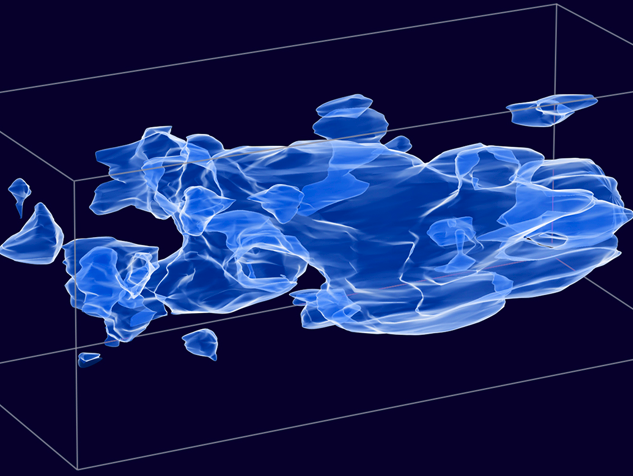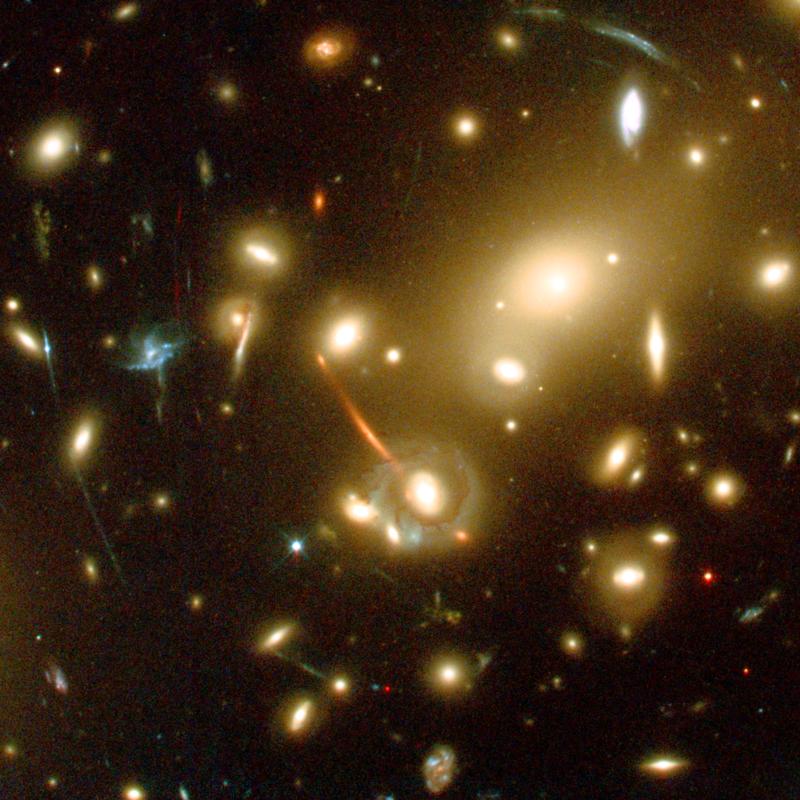Cryogenic Dark Matter Search: Dark Matter:WIMPs

Hypothetical Dark Matter Map
The matter most of us are familiar with, from the air we breath, to the stars, and the ground we walk on, is composed of well-known particles: protons, neutrons, and electrons. These common place particles are the construction components of atoms, and then molecules, until they produce the visible universe with which we are familiar.
While other particles are known to exist, such as neutrinos and other more 'exotic' particles, none of these can be Dark Matter. They simply aren't heavy enough. Some particle that neither emits nor absorbs light might work like gravitational glue to hold together the galaxies as we know them. The candidates CDMS are searching for are called Weakly Interacting Massive Particles (WIMPs).
Pictured right is an image from the Hubble Telescope of the Bullet Cluster of Galaxies. "Gravitational Lensing" causes what appears to simply be blurs around the galaxies. Superimposed in blue is the hypothesized distribution of dark matter to cause the lensing.
These particles could weigh 10 to 10,000 times what a proton weighs but would pass straight through most ordinary matter. They will only be detectable if they collide directly with an atom's nucleus. Because the atom is largely the empty space of an electron cloud, up to 10 trillion WIMPs could pass through a kilogram of solid material on Earth in a second and perhaps as few as one per year would ever hit anything.

Gravitational Lensing


